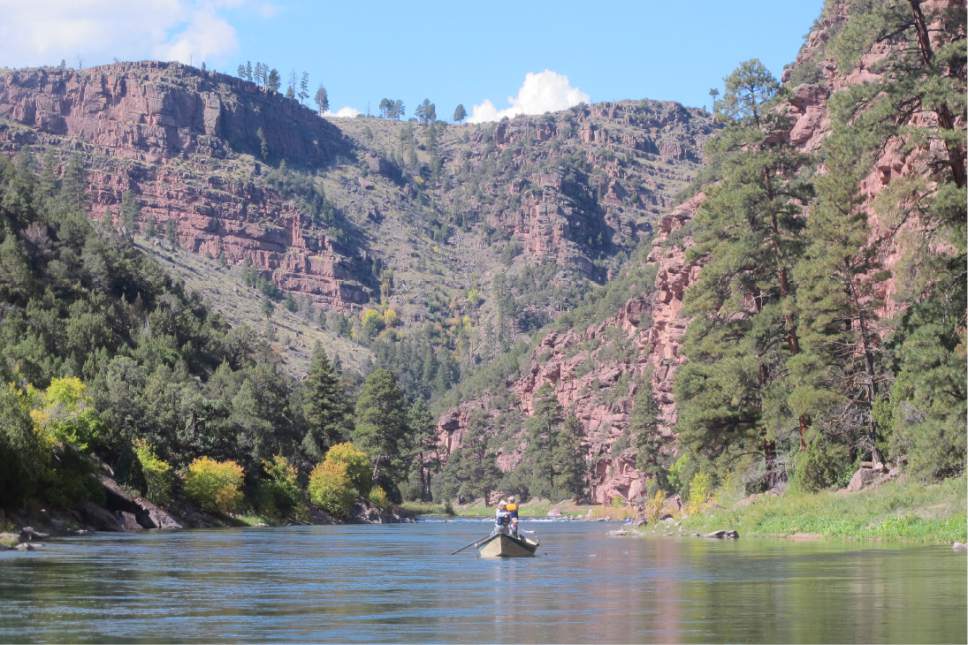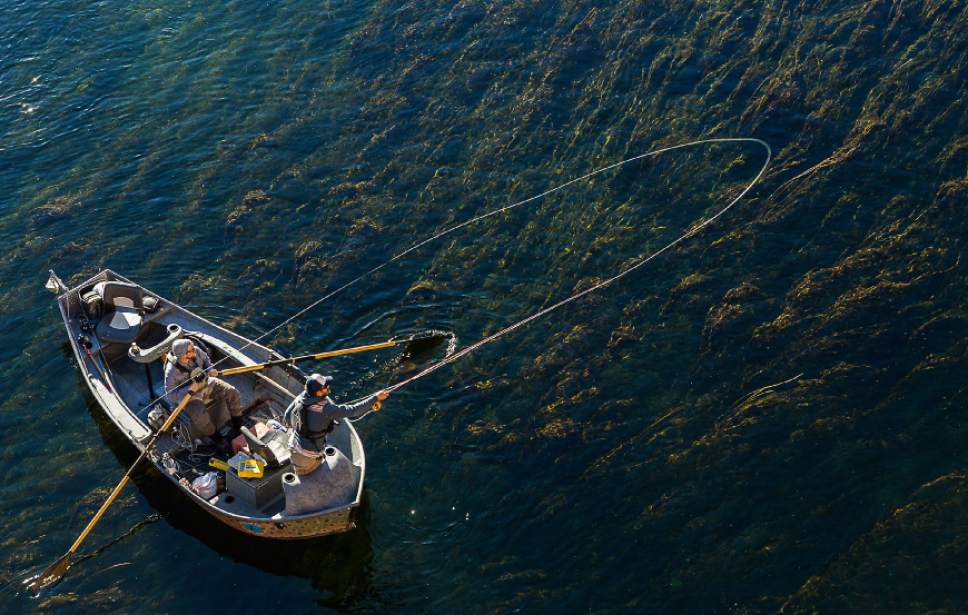This is an archived article that was published on sltrib.com in 2016, and information in the article may be outdated. It is provided only for personal research purposes and may not be reprinted.
After a string of legal setbacks, environmental groups opposed to a proposed Utah nuclear power project announced Wednesday they are abandoning their legal challenge to the massive transfer of water rights necessary to operate the two-unit generating station envisioned for Green River.
While they are conceding the water question, HEAL Utah and its allies are not throwing in the towel in the fight against Blue Castle Holdings' plans, which they say are stalled and short on funds.
"Blue Castle may be winning in the courts, but they're losing everywhere else. When no one wants to invest in your company and no utility wants to buy your power, you're in deep trouble," HEAL Executive Director Matt Pacenza told reporters outside Matheson Courthouse in Salt Lake City. "Everything we have learned over the last nine years is that this is a project that has not gotten off the ground."
Last month, HEAL and co-plaintiffs Uranium Watch and Living Rivers lost their appeal of a state judge's decision to affirm San Juan and Kane counties' request to transfer water rights to 53,000 acre feet to the Blue Castle project, expected to cost between $18 billion and $20 billion. The water would come from the Green River, a major tributary to the Colorado whose dwindling water resources are subject to an interstate compact.
In 2013, after five days of trial, 7th District Judge George Harmond concluded the plant would not impair existing water rights or interfere with more "beneficial" uses of the water.
The environmental groups have decided against petitioning the Utah Supreme Court to review the Court of Appeals' upholding of Harmond's decision.
"We actually believe this is the best path for stopping this project," Pacenza added. "Once we officially drop it, Blue Castle would have to begin making very significant payments to the two southern Utah water districts that they have successfully leased water from."
Under the terms of its lease, the Orem-based firm, founded by former lawmaker Aaron Tilton, is to pay the two water conservancy districts $180,000 a year. After five years, the annual payments jump to $580,000. Pacenza doubts Blue Castle can meet this obligation
Tilton did not respond to a voicemail, but a lawyer for Blue Castle says the groups are in no position to critique the status of the project.
"HEAL Utah is simply not privy to Blue Castle's finances and does not know what Blue Castle has been doing, concerning its efforts in developing the project. Blue Castle has honored the terms of its leases with the two water conservancy districts and intends to continue to do so," said David Wright, who defended Blue Castle at the trial in Harmond's Price courtroom.
Sarah Fields of Uranium Watch contends the nuclear project has attracted no interest from utilities and Blue Castle lacks the resources to move forward on permit applications to the Nuclear Regulatory Commission.
Blue Castle hasn't communicated with the federal agency since 2011, she said.
"Thus far, Blue Castle has raised only $20 million. They need between $50 and $100 million to submit an application to the NRC for an early-site permit," she said. "It would then have to submit an application for an combined construction and operation permit, and that would take $500 million on up."
Yet last month Blue Castle announced it was launching a process for selecting contractors to build the plant. The company said its station would generate between 2,200 and 3,000 megawatts — increasing Utah's generation capacity by up to 50 percent — while consuming just 1 percent of its water diversions.
"The original approval by the State Water Engineer has now stood the test of an appeal where the relevant evidence was weighed. The ruling is a major de-risking milestone for the Blue Castle Project. It provides future utility participants greater certainty that the major asset, water for the deployment of a new nuclear plant, has been secured economically," Tilton said in a news release.
While the company's water rights might be secure, its actual command of the water is far more tenuous, according to Gary Wockner, executive director of Save the Colorado.
The Colorado River Basin's system of water storage is at its lowest point in history, and the levels of Lake Powell and Lake Mead are at historic lows.
"The law says one thing, but water reality is saying something else," said Wockner, whose group was not involved with the Blue Castle litigation. States such as Wyoming, Colorado and Utah are "taking out way more than is coming in," he said. These states "think they have more rights for water out of the Colorado. They are all trying to build more dams and reservoirs. It might be that state courts uphold that concept, but if you go to federal court you might have a different outcome."
John Weisheit, conservation director for Living Rivers, noted the Harmond ruling made Blue Castle's water right junior to the Central Utah Project and other applications pending for water in the Uinta Basin.
"The San Juan water right dates only to 2000, which is a very low-priority year," Weisheit said. "The nuclear power plant would be at risk in times of critical shortages of not having water to run their reactor. For investors this is a bad idea."
Brian Maffly covers public lands and environment for The Salt Lake Tribune. Maffly can be reached at bmaffly@sltrib.com or 801-257-8713.
Twitter: @brianmaffly





